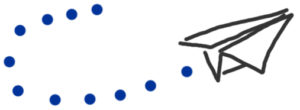In the Letters to the Editor section of today’s (Saturday March 2, 2019) WSJ, there are two letters from AP subject teachers which support an earlier WSJ article titled “AP Tests Are Still a Great American Equalizer” by Caitlin Macy in the Review section on February 23, 2019.
I have made my position on the SAT and AP tests clear in a blog entry from about a year ago (WSJ: The Gatekeeper Tests). The tests and the educational activity that serves them should be thrown out – and it seems from the Macy article, there is noticeable movement in that direction. I am heartened to hear that there is a crack in the SAT/AP shield (yes, a shield analogy because it is an industry that will kick and flail to keep itself alive). And the schools that Macy points to as embracing competition are, in my view, waiting to see how the early adopters react. Remind yourself about print photography.
If there is too much pride to adopt the IB, why not develop something to replace AP that deals with the shortcomings? The Letters to the Editors that I referred to at the beginning give a clue to part of the answer. Teachers who teach AP classes are endeared to them. They just don’t know or can’t imagine better (nod to Steve Jobs’ quote of “A lot of times, people don’t know what they want until you show it to them.“) What if high school teachers (or even let’s say AP teachers) get course reviews like college professors do? What are they going to say are the reasons for critiques? Pretty easy to guess they will point to the AP curriculum or AP test. What else is there if all they are trying to do is “teach to the test.” And if we want to have faces for the AP curriculum and test, we will need to take a closer look at the qualifications of the AP committees. Guess what you will find (or even better, go ahead and look it up).
The following are my thoughts on parts of the original essay and the subsequent letters…
“I still believe that AP courses are one of the greatest preparations for college life whether or not the student actually receives placement.” Paul Pomeroy, Letters to the Editor
My thought: AP courses are taught in a high school framework and format. There is minimal semblance to a college course. For a subject such as AP Psychology, I have always advised taking it in college…the professor will usually incorporate the latest research and provide expert perspective and analysis. The college course has more chance of being inspirational and life-changing.
“If private schools opt out of AP tests, what is their alternative measure to assess learning growth?” Dileep Rajan, Letters to the Editor
My thought: Well, there’s the IB for a start. And there’s opportunity to create a 2-year high school curriculum, like A-level and IB, that extends the existing high school Honors course so that students learn more and are better prepared for the leap to college (a YCISL objective). Close those year-over-year gaps that Salman Khan has talked about.
“…enabling students to save semesters of tuition fees.” Caitlin Macy, Review Essay
My thought: You might want to check that. AP credit in college means you cannot take a course or two. It typically doesn’t contribute to the units counted towards the degree. Colleges still want you to pay for the full ride.
“While public schools nationwide continue to embrace competition, private schools seem increasingly uncomfortable with it.” Caitlin Macy, Review Essay
My thought: Wishful thinking. My worldview sees private schools as agile, willing to be a part of the proof-of-concept, and engaging in timely problem-solving. Public services tend to have much greater inertia and lower tolerance for risk and failure (and in YCISL, we see value and advantage in failure and accepting risk).
“For students in underserved communities, the APs can be a way out precisely because they are nationally recognized.” Caitlin Macy, Review Essay
My thought: And where are they going? This reminds me of the low rating that the US has in Geert Hofstede’s Cultural Dimensions for LTO (long-term orientation). For how long do most AP students hold on to their AP experience? Ever brought it up at a cocktail party or during a date? (And that was a nod to Sir Ken Robinson’s “If you’re at a dinner party, and you say you work in education — actually, you’re not often at dinner parties, frankly.“)

